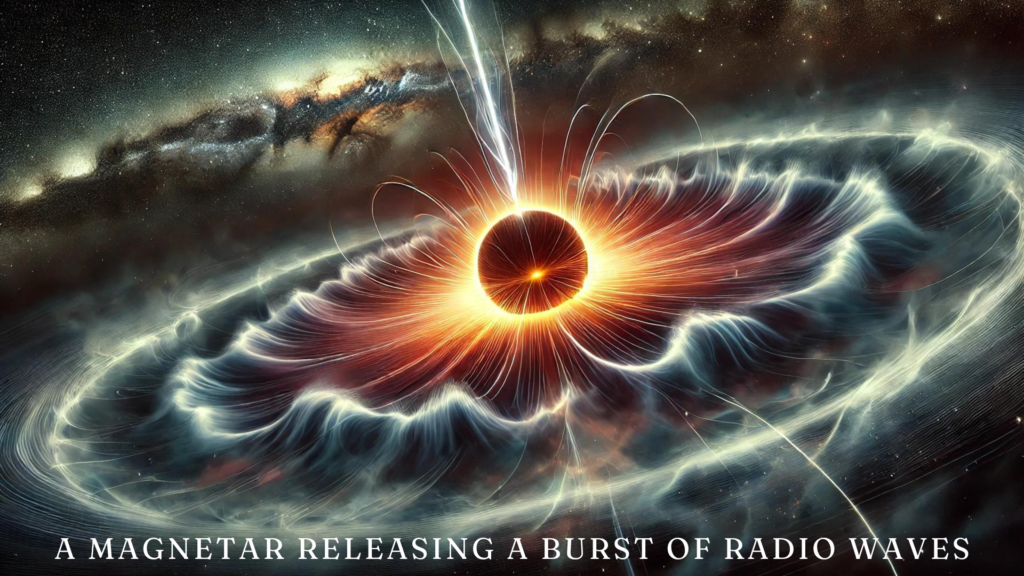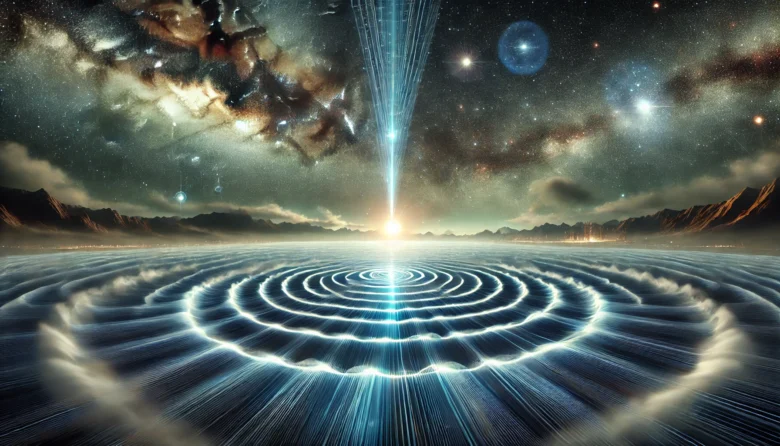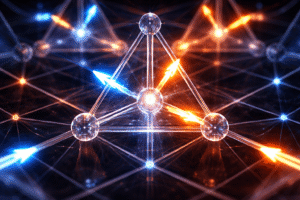Imagine a signal from the vastness of space, lasting only a fraction of a second yet carrying the energy of a hundred million suns. Sounds like something straight out of a science fiction novel, right? But this phenomenon, known as Fast Radio Bursts (FRBs), is very real and has been puzzling astronomers since their discovery in 2007. These mysterious cosmic flashes have ignited curiosity and debate within the scientific community, leaving many wondering: what exactly are Fast Radio Bursts, and what do they mean for our understanding of the universe?
What Are Fast Radio Bursts?
Fast Radio Bursts (FRBs) are intense bursts of radio waves that last only a few milliseconds. First discovered by chance in 2007 by Dr. Duncan Lorimer and his team, FRBs are one of the most enigmatic phenomena in astrophysics. Despite their brief duration, these bursts are incredibly powerful, with some releasing more energy in a split second than the Sun emits in a year.
The Search for the Source
One of the most intriguing aspects of FRBs is their mysterious origin. Unlike other cosmic events, such as supernovae or gamma-ray bursts, FRBs do not have a clear source. Early detections suggested they were coming from outside our galaxy, but it wasn’t until 2013 that the first FRB was accurately traced to a specific location—a galaxy about 3 billion light-years away. This breakthrough only deepened the mystery: what could possibly generate such a powerful signal from such a vast distance?
Some scientists speculate that FRBs could be the result of cataclysmic events, like the collision of neutron stars or the collapse of black holes. Others suggest they might be caused by magnetars, a type of neutron star with an extremely strong magnetic field. Still, there are those who entertain the idea that FRBs could be signals from advanced alien civilizations, although this remains a highly controversial and speculative theory.

Notable Discoveries and Case Studies
The discovery of repeating FRBs was a game-changer. In 2016, astronomers found an FRB that repeated several times, challenging the idea that these bursts were caused by one-time events like star collisions. This repeatability suggested that some FRBs might come from a source that can survive whatever is producing the bursts, like a young neutron star or a pulsar.
One of the most famous repeating FRBs, known as FRB 121102, has been studied extensively. Located in a dwarf galaxy about 3 billion light-years away, this FRB has been observed to emit bursts repeatedly over the years, sometimes with months of silence in between. The study of FRB 121102 has provided valuable insights, but it has also raised new questions. For instance, why does it repeat? What makes this source different from others?
In another groundbreaking discovery in 2020, astronomers detected an FRB from within our own galaxy, the Milky Way. This was a significant find because it allowed scientists to study the event in much greater detail. The source was traced to a magnetar, lending support to the theory that at least some FRBs are produced by these highly magnetized neutron stars.
Theories and Speculations
While the exact cause of FRBs remains uncertain, several theories have been proposed.
Cataclysmic Events: Some FRBs could result from cataclysmic events such as the collision of neutron stars or the collapse of massive stars into black holes. These events are rare but release enormous amounts of energy, which could explain the intensity of the bursts.
Magnetars: Another leading theory is that FRBs are caused by magnetars, which are neutron stars with extremely strong magnetic fields. The intense magnetic activity of these stars could produce the bursts of radio waves that we detect as FRBs.
Exotic Objects: Some scientists suggest that FRBs could be linked to more exotic objects, like cosmic strings or even the hypothetical dark matter. These are speculative ideas, but they illustrate the wide range of possibilities that FRBs present.
Alien Technology: The idea that FRBs could be signals from an advanced alien civilization has captured the public’s imagination, though it is considered highly unlikely by most scientists. However, the possibility that FRBs could be some form of communication has not been entirely ruled out.
The Future of FRB Research
With the development of new technology and more sensitive instruments, the study of FRBs is rapidly advancing. The Canadian Hydrogen Intensity Mapping Experiment (CHIME) has been instrumental in detecting new FRBs, including many repeating ones. In fact, CHIME has discovered hundreds of FRBs since it began operations in 2018, significantly expanding our understanding of these mysterious signals.
As we continue to observe and analyze FRBs, scientists hope to uncover patterns that might provide clues to their origins. The search for the source of FRBs is not just about understanding these bursts themselves but also about gaining insights into the fundamental processes of the universe.
Conclusion
Fast Radio Bursts remain one of the most fascinating and mysterious phenomena in the cosmos. With each new discovery, we inch closer to understanding what causes these powerful signals, yet many questions remain unanswered. Whether they are the result of cataclysmic events, magnetars, or something even more exotic, FRBs offer a unique window into the workings of the universe.
As we continue to explore the mysteries of space, FRBs remind us of how much there is still to learn and discover. The universe is full of surprises, and who knows what other cosmic mysteries await us?
Author’s Note
As someone passionate about the mysteries of the universe, writing about Fast Radio Bursts has been a thrilling journey. These cosmic signals, brief yet powerful, challenge our understanding of space and remind us of the boundless wonders that await discovery. I hope this blog inspires you to look up at the stars with a sense of curiosity and wonder, just as I do.
G.C., Ecosociosphere contributor.
References and Further Reading
- NASA: Fast Radio Bursts
- CHIME/FRB: Understanding Fast Radio Bursts
- robots – Leiden Medievalists Blog. https://www.leidenmedievalistsblog.nl/tags/robots
- Repeating Mysterious Radio Signals in Space | WordlessTech. https://wordlesstech.com/repeating-mysterious-radio-signals-in-space/
- Search results | Metal Guitarist Forums. https://www.metalguitarist.org/tags/created/
- Van Putten, T. (2016). Modelling the atmosphere of a magnetar during a burst. http://www.loc.gov/mods/v3
- SETI project homes in on strange ‘fast radio bursts’. https://jewishbusinessnews.com/2018/01/13/seti-project-homes-in-on-strange-fast-radio-bursts/
- Secrets of Rkbgfrb – Tech News English. https://technewsenglish.com/rkbgfrb/
- New findings make fast radio bursts all the more intriguing | Mint Lounge. https://lifestyle.livemint.com/smart-living/innovation/new-findings-make-fast-radio-bursts-all-the-more-intriguing-111605252115008.html
- The Periodic Table. https://agmetals.com/the-periodic-table/




